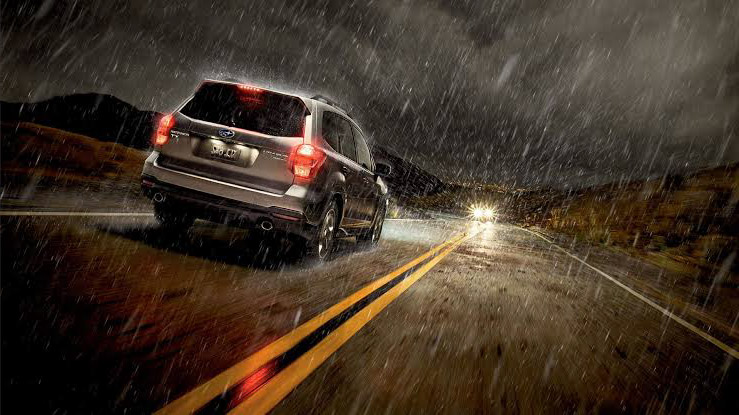On a summer afternoon, on I-57 south of Rantoul, Illinois I was creeping along at a reduced speed in fog and mists after a thunderstorm. Visibility was about 100 feet, and hail covered the roadway like little marbles, making it very slippery. A man in a BMW passed me doing about 70 mph. Not only was the road slippery, but we couldn’t see anything beyond just a few feet. As a driver for over 30 years, I’ve seen the same insanity in different places across the country, in heavy rain, snow, hail, fog, dust, etc. I’ve seen amateur drivers do it; I’ve seen the pros do it. Wherever visibility is bad and the road surface is slippery, there’s always someone flying through without slowing even one mile per hour.
Out here in Arizona, our roads get extremely slippery in the first few minutes of rain. This can happen anywhere after a long dry spell, but it is less likely in places where it rains all the time, like the Pacific Northwest. The cause is a film of oil that accumulates on the roadway and rises when the rain begins to fall. This creates a “Slip-N-Slide.” It takes about thirty minutes of steady rain to wash the road clean. Around here, we rarely get that much rain at one time, so it happens almost every time we get rain—and it will be the same for you if you live and drive in an arid area.
Remember that control rests on four little rubber “contact pads” where your tires touch the pavement. If rainwater builds up between the tire and the road, your traction is broken. This is hydroplaning, and it results when the tread “channels” on your tire cannot conduct all the water from between your tire and the road, and the tire is forced to ride on top of the water that’s in between, like surfing. On a dry road, NO tread gives you the best traction, which could be defined as “all rubber against all road” (I’m not talking about bald tires—think of a “slick” racing tire). Put more water between rubber and road than your tread can expel and you might as well be on ice skates. Have you ever seen the tires advertised as “rain tires?” They generally have a very deep, voluminous tread pattern that channels large amounts of rain water out from between the tire and the road surface—deeper tread means more effective water expulsion.
To a 17-year-old blond kid, driving down a paved county road in a ’63 Ford wagon with tires as bald as Uncle Fester, whipping the steering wheel back and forth and seeing absolutely ZERO response directionally, this was a remarkable thing. I’m not naming any names. When hydroplaning, you can turn your wheels in gleeful abandon, but the vehicle keeps moving in whatever direction it was originally headed. To those of you who are maybe a little smarter than this boy, sliding down the highway on a layer of water and oil without directional control might be a bit disconcerting. The risk of hydroplaning increases with speed, and it doesn’t usually occur at lower speeds (below 35 mph).
The first thing to do when the rain starts to fall is slow down. The standard “driving instructor rule of thumb” is to slow down by a third in the rain, and by at least half in the snow. Slow more if ice may be present. Make sure your tires are in great shape and that they are inflated properly.
Be careful out there, and keep those tires FIRMLY planted on the asphalt!

